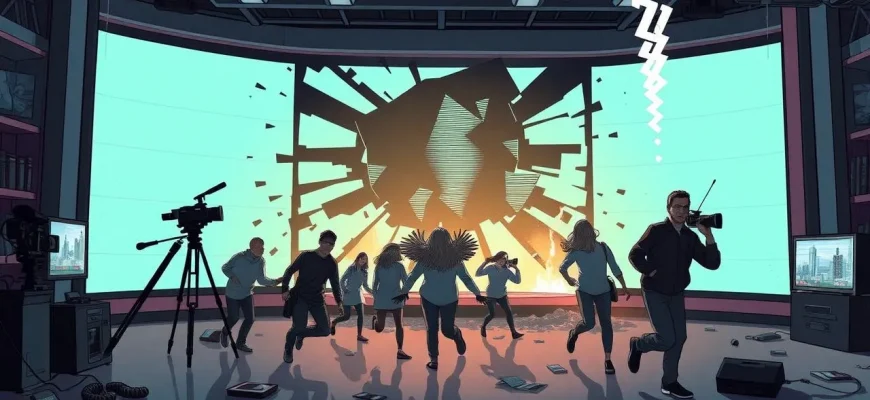Dive into the thrilling world of disaster movies where television broadcasting plays a central role. These films not only showcase the chaos and drama that can unfold on screen but also highlight the behind-the-scenes struggles of those in the broadcasting industry. From natural disasters to technological failures, each film in this collection offers a unique perspective on how television can both inform and mislead during times of crisis. Whether you're a fan of suspense, drama, or just love a good story about human resilience, this curated list will keep you on the edge of your seat.

The Day After Tomorrow (2004)
Description: This film captures the chaos of a sudden ice age, with TV newsrooms becoming the epicenter of information dissemination. The film's portrayal of weather reporters and news anchors trying to keep the public informed amidst their own personal struggles adds a layer of realism to the disaster genre.
Fact: The film was inspired by the book "The Coming Global Superstorm" by Art Bell and Whitley Strieber. It was one of the first major films to use CGI extensively for weather effects.
 30 Days Free
30 Days Free 
Deep Impact (1998)
Description: A comet is on a collision course with Earth, and television plays a crucial role in informing the public about the impending doom. The film showcases the emotional turmoil of news anchors as they report on humanity's potential extinction.
Fact: The film was released in the same year as another asteroid disaster movie, "Armageddon," leading to comparisons between the two.
 30 Days Free
30 Days Free 
The Perfect Storm (2000)
Description: While not directly about broadcasting, the film includes scenes where TV news reports on the storm, capturing the public's fascination and fear. The film's depiction of media coverage adds to the tension of the real-life events.
Fact: The film is based on the true story of the Andrea Gail, a fishing vessel lost at sea during the 1991 Perfect Storm.
 30 Days Free
30 Days Free 
Twister (1996)
Description: Tornado chasers and TV crews converge to capture the ultimate storm on film. The movie highlights how television can both document and sensationalize natural disasters.
Fact: The film was one of the first to use CGI to create realistic tornado effects, which were groundbreaking at the time.
 30 Days Free
30 Days Free 
The Day the Earth Caught Fire (1961)
Description: This classic film features a scenario where nuclear testing has shifted Earth's orbit, causing catastrophic climate changes. TV newsrooms are shown struggling to report on the end of the world.
Fact: The film was shot in black and white, with color used only for the opening and closing scenes to signify the change in Earth's condition.
 30 Days Free
30 Days Free 
The Core (2003)
Description: When the Earth's core stops spinning, TV broadcasts become a critical tool for informing the public about the bizarre events unfolding. The film shows how media can both inform and mislead in times of crisis.
Fact: The film's premise was inspired by a real scientific theory about the Earth's core and its magnetic field.
 30 Days Free
30 Days Free 
The Mist (2007)
Description: While primarily a horror film, "The Mist" includes scenes where local TV stations report on the mysterious fog, adding to the sense of isolation and panic among the characters.
Fact: The film's ending was controversial, differing significantly from Stephen King's novella, which King himself praised.
 30 Days Free
30 Days Free 
Volcano (1997)
Description: A volcano erupts in Los Angeles, and TV news becomes the primary source of information for the public. The film captures the chaos in newsrooms as they report on the disaster.
Fact: The film was released in the same year as another volcano disaster movie, "Dante's Peak," leading to a box office competition.
 30 Days Free
30 Days Free 
The Day After (1983)
Description: This made-for-TV movie about nuclear war includes extensive scenes of television broadcasting, showing how media would react to and report on such a catastrophic event.
Fact: It was one of the highest-rated TV movies of all time, sparking widespread discussion about nuclear war.
 30 Days Free
30 Days Free 
Network (1976)
Description: While not a traditional disaster film, "Network" explores the chaos within a TV newsroom as ratings and sensationalism take over, leading to a form of media disaster.
Fact: The film won four Academy Awards, including Best Actor for Peter Finch, who famously played a news anchor who goes mad on air.
 30 Days Free
30 Days Free 








